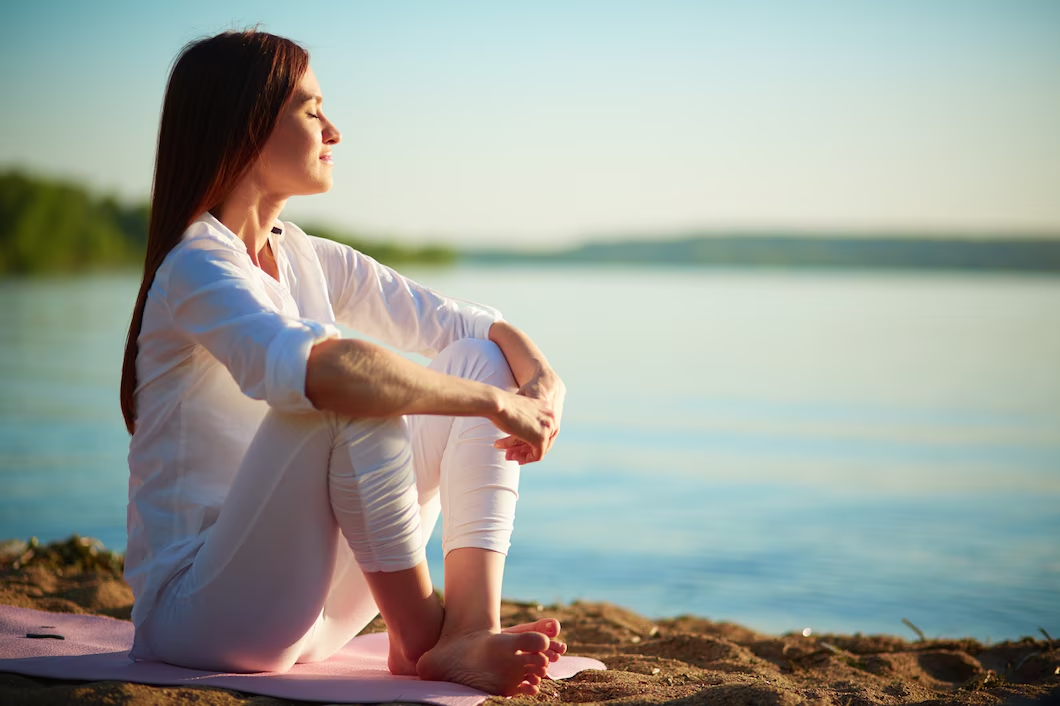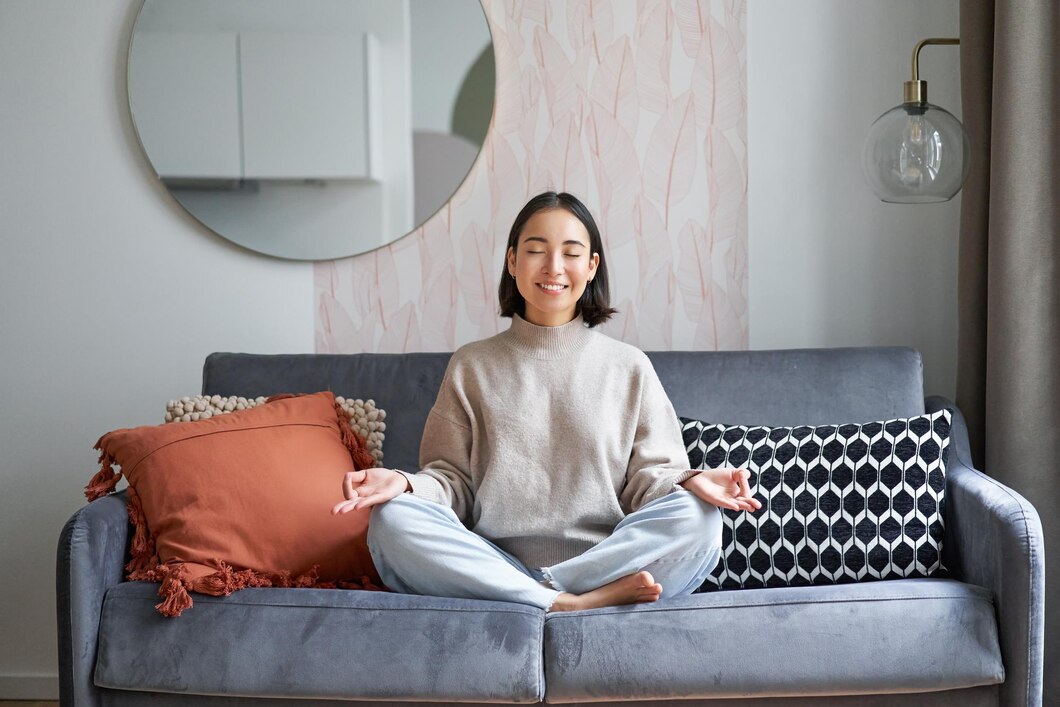Top Relaxation Techniques to Calm Your Mind
Stress is an inevitable part of life in the modern,, fast-paced world. We can all agree that life gets busy; whether it is due to work pressures, personal commitments, or the unexpected, knowing how to relax your mind and body is vital in keeping both your physical and mental well being in check. There are several stress relief

Stress is an inevitable part of life in the modern,, fast-paced world. We can all agree that life gets busy; whether it is due to work pressures, personal commitments, or the unexpected, knowing how to relax your mind and body is vital in keeping both your physical and mental well being in check. There are several stress relief activities that can reduce anxiety, increase concentration, and boost your sense of well-being.
This guide covers science-backed mindfulness exercises and other relaxation techniques you can use to feel more at ease and more in control of your life.

Why Relaxation is Essential for Mental and Physical Health
Chronic stress can lead to a range of health issues, including high blood pressure, weakened immunity, anxiety, and sleep disorders. Practising stress relief activities regularly can:
- Reduce cortisol (the stress hormone) levels
- Improve sleep quality and energy levels
- Boost mood and emotional resilience
- Lower the risk of heart disease and other chronic illnesses
- Enhance focus and productivity
Incorporating mindfulness exercises and relaxation techniques into your routine can create a positive impact on your overall well-being.
Best Ways to Relax: Top Techniques for Stress Relief
1. Deep Breathing Exercises
Breathing techniques are one of the simplest and most effective ways to reduce stress quickly.
How to Practice Deep Breathing:
- 4-7-8 Breathing: Inhale for 4 seconds, hold for 7 seconds, and exhale for 8 seconds.
- Diaphragmatic Breathing: Breathe deeply through your belly instead of your chest for a more calming effect.
- Box Breathing: Inhale for 4 seconds, hold for 4 seconds, exhale for 4 seconds, and hold again for 4 seconds.
Deep breathing activates the parasympathetic nervous system, helping the body relax and reduce anxiety.
2. Mindfulness Meditation
Practising mindfulness allows you to stay present and focused, reducing worries about the past or future.
How to Practice Mindfulness:
- Find a quiet place and sit comfortably.
- Focus on your breath, observing each inhale and exhale.
- If your mind wanders, gently bring your focus back to your breath.
- Practice for 5-10 minutes daily.
Mindfulness meditation improves emotional regulation, reduces negative thinking, and enhances self-awareness.
3. Progressive Muscle Relaxation (PMR)
PMR helps release tension by systematically tensing and relaxing different muscle groups.
How to Do PMR:
- Start at your feet and slowly work your way up.
- Tense each muscle group for 5 seconds, then relax for 10 seconds.
- Repeat the process for your legs, abdomen, arms, shoulders, and face.
This technique is particularly effective for those struggling with stress-related muscle tension and sleep disturbances.
4. Guided Visualization & Imagery
Visualisation helps calm the mind by mentally transporting you to a peaceful place.
How to Practice:
- Close your eyes and picture a serene environment (e.g., a beach, a forest, or a quiet garden).
- Engage your senses—imagine the sounds, smells, and textures of the scene.
- Spend 5-10 minutes immersed in this calming mental space.
Guided imagery can reduce anxiety, improve mood, and lower blood pressure.
5. Journaling for Stress Relief
Writing down thoughts and emotions helps process feelings and reduce mental clutter.
Journaling Techniques:
- Gratitude Journaling: Write down three things you’re grateful for daily.
- Emotional Release Journaling: Express your worries and frustrations on paper.
- Goal Setting Journaling: Outline small, achievable goals for personal growth.
Journaling provides emotional clarity and promotes self-reflection.
6. Listening to Calming Music
Music has a profound effect on mood and relaxation. Slow, instrumental music can help reduce stress levels.
Relaxing Music Suggestions:
- Classical or instrumental music
- Nature sounds (rainfall, ocean waves, birdsong)
- Binaural beats and white noise for deep relaxation
Listening to music can lower cortisol levels and promote a state of calmness.
7. Spending Time in Nature
Connecting with nature is one of the best ways to relax and restore mental clarity.
Outdoor Relaxation Activities:
- Take a walk in the park or forest.
- Practice grounding by walking barefoot on grass or sand.
- Sit by a lake or river and listen to the sounds of water.
Nature has been shown to lower stress, improve focus, and enhance emotional well-being.
8. Practicing Gentle Yoga & Stretching
Yoga combines movement, breath control, and meditation to reduce stress and tension.
Relaxing Yoga Poses:
- Child’s Pose: Stretches the lower back and promotes relaxation.
- Legs Up the Wall: Reduces tension and calms the nervous system.
- Cat-Cow Stretch: Relieves back tension and improves flexibility.
Regular yoga practice improves mental clarity, reduces anxiety, and enhances physical relaxation.
9. Engaging in Creative Activities
Creative expression helps shift focus away from stress and fosters relaxation.
Creative Outlets for Stress Relief:
- Painting or drawing
- Playing a musical instrument
- Knitting, crocheting, or other crafts
- Writing poetry or short stories
Engaging in artistic activities promotes mindfulness and provides a sense of accomplishment.
10. Aromatherapy & Essential Oils
Certain scents have calming effects on the mind and body.
Best Essential Oils for Relaxation:
- Lavender: Reduces anxiety and promotes sleep.
- Chamomile: Eases tension and improves mood.
- Peppermint: Refreshes and relieves headaches.
- Eucalyptus: Clears the mind and soothes breathing.
Using essential oils in diffusers, bathwater, or massage oils enhances relaxation and emotional balance.

Building a Stress-Relief Routine
To effectively manage stress, consistency is key. Creating a personal relaxation routine can help maintain mental clarity and emotional balance.
Steps to Create a Stress-Relief Routine:
- Identify your stress triggers – Recognizing sources of stress helps in addressing them effectively.
- Choose relaxation techniques – Pick 2-3 stress relief activities that work best for you.
- Schedule relaxation time – Set aside time daily for relaxation, even if it’s just 10 minutes.
- Monitor your progress – Keep track of how different techniques improve your well-being.
- Adjust as needed – Experiment with new methods to find what suits you best.
By integrating these relaxation techniques into your lifestyle, you can improve mental health, reduce stress, and enhance overall quality of life.
Conclusion: Prioritizing Relaxation for Better Well-Being
Practising mindfulness exercises and other stress-relief activities is essential for maintaining a balanced and healthy life. Whether it’s deep breathing, meditation, yoga, or spending time in nature, finding the best ways to relax can help manage stress effectively.
By making relaxation a priority, you can enhance mental clarity, emotional resilience, and overall happiness. Start small, explore different techniques, and discover what works best for you to create a more peaceful and stress-free life.